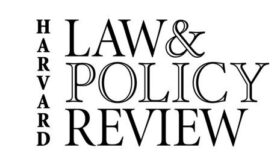Anthony Kammer
Jacob Hacker and Paul Pierson’s Winner-Take-All Politics: How Washington Made the Rich Richer was a good book and one that should be getting far more attention. Their thesis is that American inequality is at its base political—that is, inequality is not the result of rational market forces but is the byproduct of legislation lobbied for by organized industry insiders at the expense of an uniformed public. While people on the left have been making this point for some time, Hacker and Pierson have done extensive empirical research and make this argument in a cogent, well-organized way.
The income statistics this book opens with are unsettling. (They paint roughly the same picture as Tim Noah’s Slate series on the Great Divergence). Conceptually, their approach offers some helpful tools for understanding the thirty-year stagnation of America’s middle class and the emerging class of uber-rich.
This book incorporates notions of political economy that have grown out of favor during the recent climate of Chicago school orthodoxy. Many economists, particularly leading up to the financial crisis, have expressed skepticism that politics could explain macro-economic trends and tended to rely on rational market explanations. Hacker and Pierson (political scientists at Yale and Berkeley respectively) instead begin from the position that markets could not exist without government.
Taking this insight as their starting point, the authors demonstrate how political decisions establish market parameters. The explosion in income inequality was enabled not by raional market forces but by legislation and legislative drift, the process by which legislation grows out-of-touch with its original purposes. Hacker and Pierson note that beyond shifts in tax policy, politicians enabled a historic upward shift in income by rewriting the rules of financial markets and executive compensation, and by failing to take action as unions declined in both membership and political influence.
The authors do the reader another tremendous service by focusing on political organizations and institutional changes, rather than on conventional narratives of election- and personality-driven politics which often obscure how policy is made and passed in the US. The emergence of the national party committees and well-funded special interest organizations has transformed our political ecosystem. The ever-increasing access that business coalitions and industry lobbyists is one of the crucial mechanisms that entrenches winner-take-all policies and further rewards the beneficiaries of the status quo.
As dependencies developed between politicians and these new organizational forms, the parties faltered in their ability to stand up to industry. The authors spare no one in observing how these transformations affected both the left and the right—both Sens. Chuck Schumer (D-NY) and Phil Gramm (R-TX) are singled out for opposing all efforts to regulate the financial industry, and attention is given to the fact that Clinton went from being chair of the strongly pro-industry Democratic Leadership Council to the 1992 Democratic Party presidential candidate.
This book is excellent, not only for drawing attention to precipitous economic inequalities not seen since the Great Depression, but also for identifying how legislation and eroding political institutions produced this outcome.
